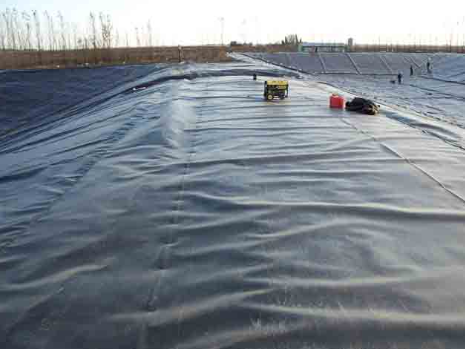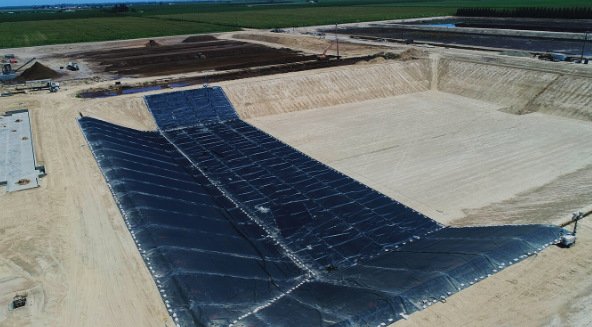- Understanding the Role of Geomembrane Liners in Waste Management
- Innovations in Geomembrane Liners for Water Management
- Geomembrane Liners: A Comprehensive Guide
- The Future of Geomembrane Liners in Civil Engineering
- Geomembrane Liners: Enhancing Landfill Stability
Manager:Alvin Wang
WhatsApp:+62 8983806051
Tel:+86 10-5797-1075
Email:steelwang@okorder.com
Address:3rd Floor, No.2 Building, No.1 Sanlihe Road
Does HDPE geomembrane get brittle over time?
In the domain of civil engineering and environmental protection, hdpe Geomembrane serves as a vital defense line against liquid seepage danger and soil pollution. In many applications ranging from liners in landfills to pond liners etc., its strength and flexibility make it the preferred choice. However, within its extensive use, a very important question often arises; does HDPE geomembrane get brittle over time?

1 Understanding HDPE Geomembrane
It is important however before we proceed to understand what properties or attributes on HDPE have that results to brittleness. High-Density Polyethylene (HDPE) geomembranes are synthetic membranes made from high-density polyethylene resins. This thermoplastic material has exceptional resistance against chemicals, UV radiation and mechanical stress hence making it ideal for containment systems.
2 Longevity and Durability
One of the major reasons why HDPE geomembranes are extensively used is because they can last long without getting damaged easily. When properly manufactured and installed, HDPE geomembrane liners can endure harsh environmental conditions for decades without significant deterioration. Its chemical stability together with structural integrity inherent make it withstand stubborn corrosives present in chemicals besides fluctuations temperature changes and possibility of mechanical loading too.
3 Brittleness: Myth or Reality?
However, even if it has been demonstrated that these materials possess such resilience or resistance to destructions overtime but some concerns regarding their being prone to becoming fragile still persist in the industry. The notion that HDPE geomembrane may become brittle with age is often fueled by anecdotal evidence and misconceptions rather than empirical data.
4 Mechanisms of Degradation
It should be noted that various mechanisms are involved in degradation of HDPE geomembrane with time before discussing brittleness on these membranes. Despite the fact that HDPE cannot readily be degraded by chemical or biological agents inherent resistances exist towards UV radiation and cyclic variations in temperature. Prolonged exposure to ultraviolet (UV) radiation can initiate photooxidative degradation, leading to the formation of free radicals and chain scission in the polymer structure. Similarly, cyclic variations in temperature can induce thermal aging, whereby the material undergoes gradual oxidative degradation and loss of mechanical properties.
5 Mitigation Strategies
However a very valid worry but not an inevitable occurrence is that HDPE geomembrane may become brittle with time. By implementing appropriate mitigation strategies during the design, installation, and maintenance phases, the longevity and performance of HDPE geomembrane can be significantly enhanced.
6 UV Stabilization
To mitigate against UV caused degradation, one most effective method is adding UV stabilizers into HDPE resin formulation. These additives act as sacrificial agents, absorbing and dissipating UV radiation before it can penetrate the geomembrane's surface. In addition, protective surface layers like Geotextiles or coatings provide additional barriers against UV damage.
7 Temperature Control
The measure should be taken to control temperature fluctuations within the geomembrane system so as to minimize thermal aging. Such measures include insulation materials, heat reflective surfaces or shading structures which help reduce heat flux or absorption. Moreover passive ventilation systems or active cooling mechanisms will ensure that temperatures are kept within set limits for best performance of a geomembrane structure.
8 Regular Inspection and Maintenance
Finally, regularly inspecting and maintaining HDPE geomembrane liners is important. This involves conducting routine checks to determine if there are any indicators of degradation such as cracking, crazing or discolouration that may be a sign of potential problems. Also, precautionary measures such as cleanings the surface, carrying out repairs and reinforcing it can prolong the lifetime of HDPE geomembranes.

9 Conclusion
In conclusion, these concerns are true about the HDPE geomenbrane becoming brittle as time goes by; however, one should understand that this can be addressed through proper designing, installing and maintenance practices. By understanding mechanisms of degradation and implementing appropriate mitigation strategies, HDPE geomembrane liners can maintain their integrity and performance for decades to come. The question therefore remains whether HDPE geomembrane gets brittle with age to which we say yes but under preventive measures taken into account its durability still prevails.
- Previous:What are the applications of HDPE geomembrane?
- Next:What are the problems with HDPE geomembrane?
-
2024-12-05Geomembrane Liners: A Comprehensive Guide






